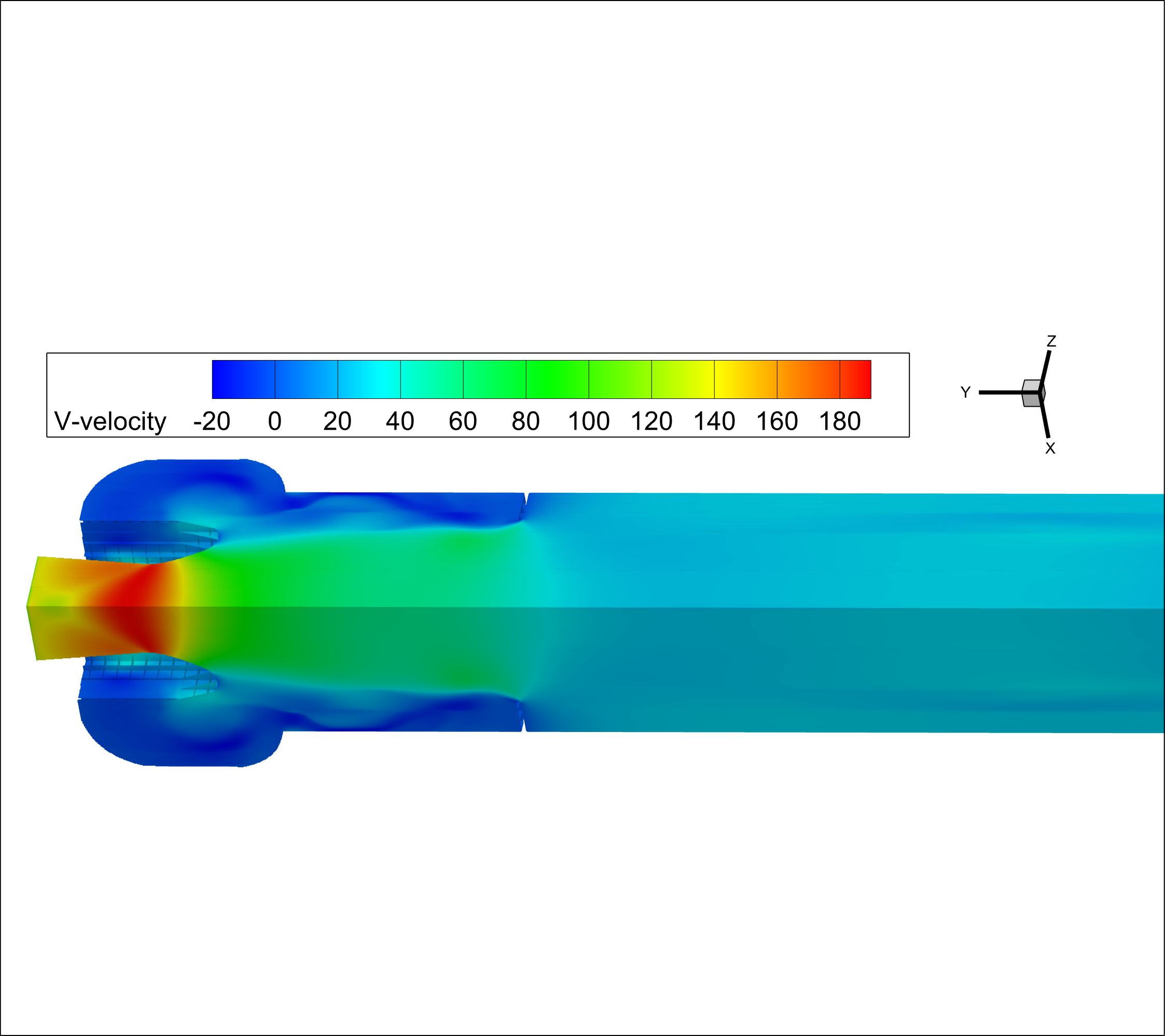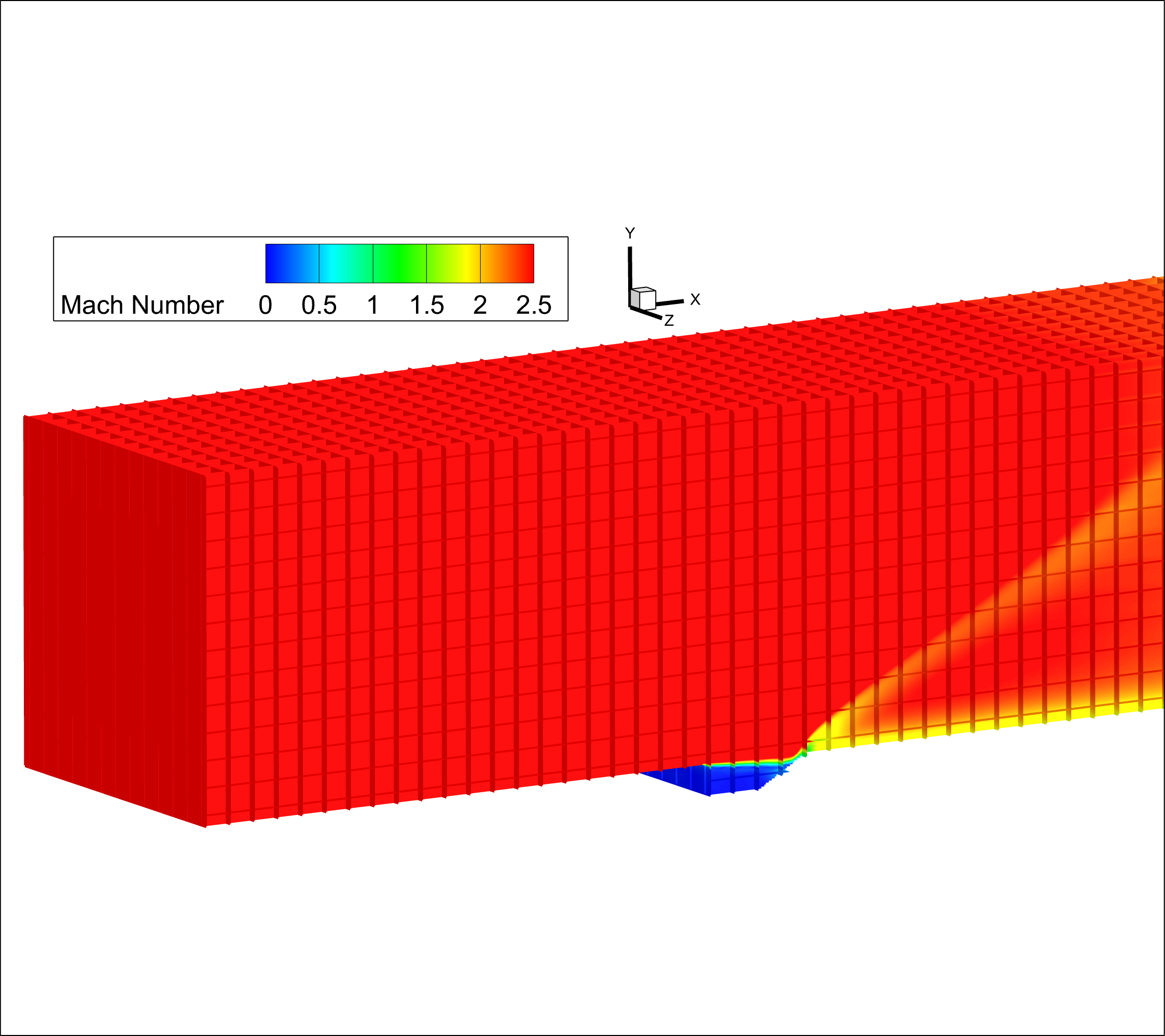Numerical analysis of internal flow in an aerospace propulsion engine using the building-cube method
JAXA Supercomputer System Annual Report February 2021-January 2022
Report Number: R21EACA52
Subject Category: JSS Inter-University Research
- Responsible Representative: Shinichiro Ogawa, Assistant professor, Aerospace Engineering, Osaka Prefecture University
- Contact Information: Shinichiro Ogawa(ogawa@aero.osakafu-u.ac.jp)
- Members: Shinichiro Ogawa, Daisuke Sasaki
Abstract
In this study, we have the following research objective at the solid rocket motor (SRM) and scramjet engine under study. For the SRM, we clarify the generation mechanism of the pressure oscillation in the SRM. For the scramjet engine, we clarify the mixing process in the cavity that affects ignition. To achieve these objectives, an analysis solver that can easily analyze the flow field inside the engine is needed.
In this study, we develop a fluid analysis solver for internal flows using the Building-Cube Method (BCM), which is based on a cartesian mesh and can easily handle the analysis of complex geometries. In addition, the purpose of this study is to clarify a complex flow phenomenon inside aerospace propulsion engines (e.g., solid rocket motors and scramjet engines).
Reference URL
N/A
Reasons and benefits of using JAXA Supercomputer System
An internal flow of the solid rocket motor and scramjet engine is computed using the Building-Cube Method solver, so that large-scale computational resources are required. Therefore, a supercomputer with large-scale memory is needed. In addition, a fast calculation method using a supercomputer is needed.
Achievements of the Year
In this year, to validate the Building-Cube Method (BCM) solver for internal flow, the flow fields of aerospace propulsion engines (e.g., solid rocket motor and scramjet engine) were analyzed using the BCM solver for internal flow. For the SRM, we performed a validation calculation of the flow field entering from the top of the SRM for the Arian5 SRM model (including the cavity and inhibitor). Figure 1 shows the visualization of the axial velocity of the Arian5 SRM model. For the scramjet engine, we performed the validation calculation for the L/D = 3 open-cavity. Figure 2 shows the visualization of the Mach number of the L/D = 3 open-cavity. It is seen from these calculation results that the constructed BCM solver for internal flow is able to analyze the flow fields of the SRM and scramjet engine.
Publications
N/A
Usage of JSS
Computational Information
- Process Parallelization Methods: MPI
- Thread Parallelization Methods: OpenMP
- Number of Processes: 1 – 5
- Elapsed Time per Case: 221 Hour(s)
JSS3 Resources Used
Fraction of Usage in Total Resources*1(%): 0.02
Details
Please refer to System Configuration of JSS3 for the system configuration and major specifications of JSS3.
| System Name | CPU Resources Used(Core x Hours) | Fraction of Usage*2(%) |
|---|---|---|
| TOKI-SORA | 0.00 | 0.00 |
| TOKI-ST | 9787.25 | 0.01 |
| TOKI-GP | 0.00 | 0.00 |
| TOKI-XM | 0.00 | 0.00 |
| TOKI-LM | 41912.61 | 3.12 |
| TOKI-TST | 0.00 | 0.00 |
| TOKI-TGP | 0.00 | 0.00 |
| TOKI-TLM | 0.00 | 0.00 |
| File System Name | Storage Assigned(GiB) | Fraction of Usage*2(%) |
|---|---|---|
| /home | 13.33 | 0.01 |
| /data and /data2 | 30000.00 | 0.32 |
| /ssd | 133.33 | 0.03 |
| Archiver Name | Storage Used(TiB) | Fraction of Usage*2(%) |
|---|---|---|
| J-SPACE | 0.00 | 0.00 |
*1: Fraction of Usage in Total Resources: Weighted average of three resource types (Computing, File System, and Archiver).
*2: Fraction of Usage:Percentage of usage relative to each resource used in one year.
ISV Software Licenses Used
| ISV Software Licenses Used(Hours) | Fraction of Usage*2(%) | |
|---|---|---|
| ISV Software Licenses(Total) | 0.08 | 0.00 |
*2: Fraction of Usage:Percentage of usage relative to each resource used in one year.
JAXA Supercomputer System Annual Report February 2021-January 2022




